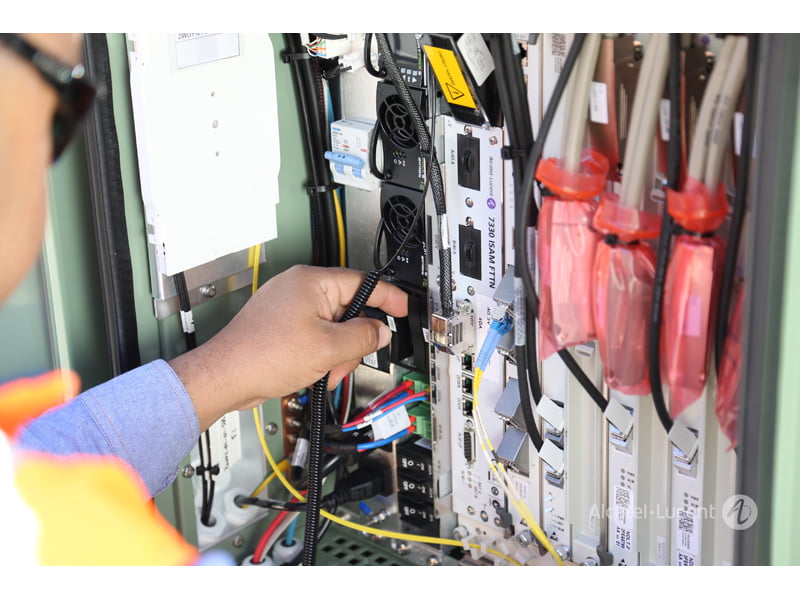The chairman of the Australian Competition and Consumer Commission Rod Sims said some fairly straight-forward things about affordability in the telecommunications sector and seems to have put noses out of joint.
Which underlines the weirdness of the telecommunications industry. Collectively, it has delivered dramatically better services at dramatically lower prices to consumers – year-on-year – for decades. And yet it still attracts the noisiest of consumer complaints.
So Mr Sims did not have to say much (or anything new, particularly) to get people riled up. It does seem odd that addressing affordability would raise hackles. As he said: “Although the term ‘affordability’ is not always prominent in the language we use, the concept is implicit in almost all of our work.”

Which is to say he is always talking about this stuff. The efficient functioning of markets in the best way to deliver better products and services to consumers at competitive prices is the central role of the ACCC. No surprises there.
In addressing Australian Communications Consumer Action Network (ACCAN) in Sydney last week, Mr Sims said several unremarkable things. First, that competition between providers leads to lower prices, improves the quality of products and services, and drives innovation.
Secondly, he said that in communications markets, infrastructure-based competition is the ‘gold standard’ (that networks that compete against each other produce the best consumer outcomes, compared to services that compete over a shared network).
And finally, he re-stated his own publicly-held belief that NBN Co should be putting in place measures that will “facilitate future infrastructure-based competition.”
“In particular, NBN Co should put in place arrangements that provide for the future separation of NBN Co at an appropriate time into separate businesses that can compete with one another, for example on delivery technology,” Mr Sims said.
This is unremarkable. Yes, this government wants to ultimately privatise the NBN and yes it has made no secret that breaking the company into separates is one way to do it. Competition is a touchstone for Malcolm Turnbull. Creating a government-owned monopoly is anathema, just as privatising a monopoly provider makes no sense.
The NBN Co said during its most recent results announcement that it had already introduced accounting separation for the various parts of its multi-technology mix. Accounting separation is the first necessary step in breaking the privatisation process. Necessary because it enables an easier and more accurate valuation of its component parts.
The accounting separation of the different technology components of the NBN Co was a recommendation of the Vertigan review, which was all about pressing for ways to achieve infrastructure competition. It included the option to split the company earlier rather than later (something rejected by the Communications Minister as distracting from the build.)
So this notion of splitting the multi-technology mix NBN into separate units and selling them off to compete against each other is not a new thing. What has gone under-reported has been the cost of creating separate accounting systems for the multi-technology mix. And the complexity the complexity that this has brought to the network’s supporting IT systems.
As noted by InnovationAus.com’s David Havyatt in a recent column in the Australian Financial Review, separate accounting has added further IT costs of close to a billion dollars. This is material.
Mr Sims ACCAN address also noted the ACCC’s soon to be published “performance monitoring” program. None of the service providers are particularly happy about this, but consumers should be.
For all the across-the-board price reductions and service improvements that have characterised the telecommunications industry in the past 30 years, there is a growing sense of confusion when trying to compare one company’s offering with another.
Rarely are apples compared with apples. So even though the trend line points to improved value and better affordability, it is difficult for the consumer – or the regulator – to get an accurate comparison at any single moment in time.
Service provider might not be over-joyed, but it looks like they are getting a scheme nonetheless. Mr Sims seems rather keen on the idea.
“A broadband performance and monitoring program would promote competition and consumer outcomes by providing transparency over the quality of broadband services that are on offer to consumers. Consumers need this information to help them select the most appropriate service for their needs and to confirm they are likely to be getting the service for which they are paying,” Mr Sims said.
“Competition in the retail fixed broadband market in Australia is limited by an asymmetry of information between RSPs and consumers on service performance,” he said. “This asymmetry of information also exists between RSPs, who may have information about the performance of their own networks, but not their competitors’ networks – which prevents them from effectively competing on service quality, not just price.”
Broadband monitoring programs have been established in the United Kingdom (2008), United States of America (2010), New Zealand (2010) and Singapore (2011), with Canada poised to commence reporting on its program in 2016.
“While the particular models adopted by each country differ, they all share common aims of improving the transparency of information for consumers and encouraging performance-based competition for broadband services,” Mr Sims said.
This seems pretty definitive.
Do you know more? Contact James Riley via Email.

